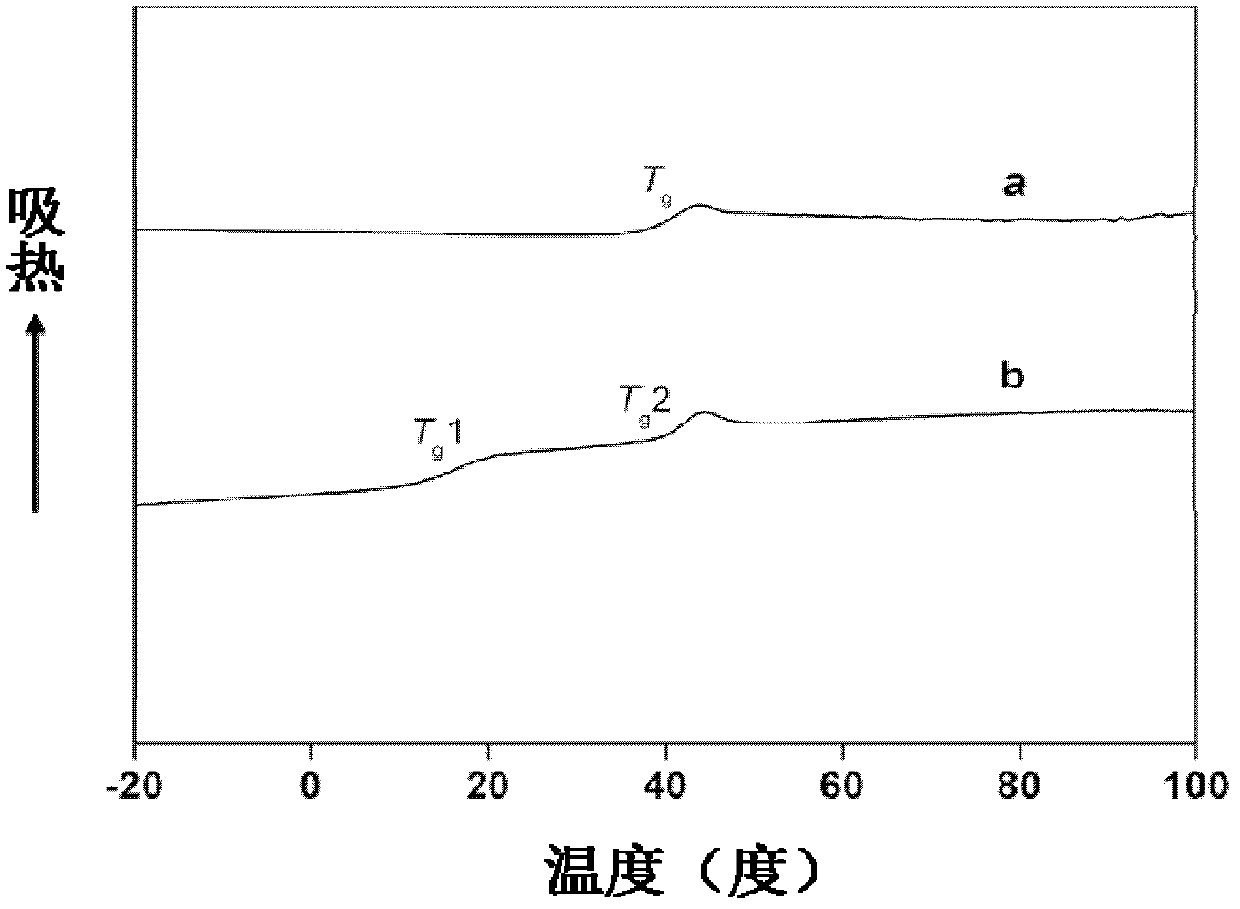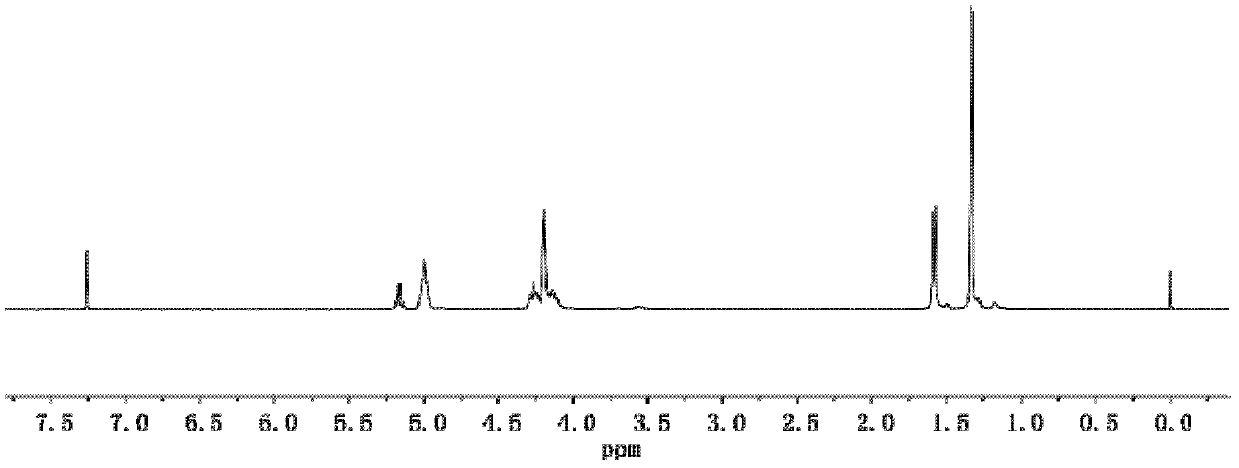Method for preparing lactide-propylene oxide-CO2 terpolymer by using rare earth three-way catalyst
A ternary catalyst and terpolymer technology, applied in the field of polymers, can solve the problems of unfavorable industrial production, long polymerization reaction time, etc.
- Summary
- Abstract
- Description
- Claims
- Application Information
AI Technical Summary
Problems solved by technology
Method used
Image
Examples
Embodiment 1
[0036] Preparation of Rare Earth Three-way Catalyst
[0037] Evacuate a 50mL two-neck bottle under reduced pressure at 80°C to 20-40Pa, replace it with high-purity argon every 20 minutes, and replace it 5 times in total, and then cool it to room temperature under the protection of high-purity argon;
[0038] Under the protection of high-purity argon, add 0.0005mol Y (CCl 3 COO) 3 , and then add 20mL 1,3-dioxane and 0.005mol glycerol in turn, until the Y(CCl in the two-necked bottle 3 COO) 3 After it is completely dissolved, add 0.01mol of diethyl zinc dropwise into the bottle. During the process of adding diethyl zinc, the reaction temperature in the bottle is controlled at 20-25°C. After the reaction gas is released, the two-necked bottle is sealed and placed in a constant temperature water bath oscillator for aging to obtain a white suspension liquid, that is, a rare earth three-way catalyst. The aging conditions are: the temperature of the constant temperature water bath...
Embodiment 2
[0040] Evacuate the reactor at 80°C to 20-40Pa, fill it with CO 2 Treated for 2 hours, filled with CO 2 6 times, then cooled to room temperature; the rare earth three-way catalyst (0.0005mol yttrium trichloroacetate, 20mL1, 3-dioxane, 0.005mol glycerol, 0.01mol ZnEt 2 ) at CO 2 Put it into the reaction kettle under protection, and inject 100 mL of propylene oxide dissolved with 2.06 g of recrystallized lactide into the reaction kettle at the same time. The molar ratio of lactide to propylene oxide is 0.01431:1.431;
[0041] Put the reaction kettle into an adjustable constant temperature heating bath, quickly pass the carbon dioxide pressure regulator to make the carbon dioxide pressure in the kettle reach 4.0MPa under the condition of a stirring rate of 500rpm, the polymerization reaction temperature is 70°C, and the reaction time is 10 hours;
[0042] After the polymerization reaction is over, cool the reactor to room temperature with a cold water bath at a temperature of 1...
Embodiment 3
[0045] Evacuate the reactor at 80°C to 20-40Pa, fill it with CO 2 Treated for 2 hours, filled with CO 2 6 times, then cooled to room temperature; the rare earth three-way catalyst (0.0005mol yttrium trichloroacetate, 20mL 1,3-dioxane, 0.005mol glycerol, 0.01mol ZnEt 2 ) at CO 2 Put it into the reaction kettle under protection, and inject 100 mL of propylene oxide dissolved with 4.12 g of recrystallized lactide into the reaction kettle at the same time. The molar ratio of lactide to propylene oxide is 0.02862:1.431;
[0046] Put the reaction kettle into an adjustable constant temperature heating bath, quickly pass the carbon dioxide pressure regulator to make the carbon dioxide pressure in the kettle reach 4.0MPa under the condition of a stirring rate of 500rpm, the polymerization reaction temperature is 70°C, and the reaction time is 10 hours;
[0047] After the polymerization reaction is over, cool the reactor to room temperature with a cold water bath at a temperature of 1...
PUM
| Property | Measurement | Unit |
|---|---|---|
| thermal decomposition temperature | aaaaa | aaaaa |
| glass transition temperature | aaaaa | aaaaa |
| decomposition temperature | aaaaa | aaaaa |
Abstract
Description
Claims
Application Information
 Login to View More
Login to View More - R&D
- Intellectual Property
- Life Sciences
- Materials
- Tech Scout
- Unparalleled Data Quality
- Higher Quality Content
- 60% Fewer Hallucinations
Browse by: Latest US Patents, China's latest patents, Technical Efficacy Thesaurus, Application Domain, Technology Topic, Popular Technical Reports.
© 2025 PatSnap. All rights reserved.Legal|Privacy policy|Modern Slavery Act Transparency Statement|Sitemap|About US| Contact US: help@patsnap.com


